Toxicology

Projects and initiatives
HealthToxicology
The NAM Navigator: A unique repository for information on the validation and acceptance of New Approach Methodologies
The NAM navigator is an innovative knowledge portal to navigate you to and through valuable information on the development, standardization, validation and acceptance of New Approach Methodologies (NAM). The NAM Navigator acts as an online guide that provides specific information needed in each of these steps, thereby increasing the broad use of animal-free innovations. Follow the link in the video to start navigating!
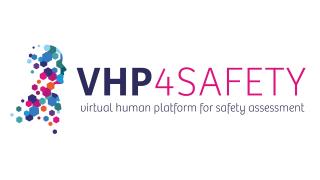
Projects and initiatives
HealthToxicologyIn vitroIn silico
VHP4Safety project
The safety testing of chemicals and pharmaceuticals traditionally relies on animal studies. However, these raise ethical concerns and often fail to accurately predict human responses. New scientific developments offer opportunities to build a Virtual Human Platform (VHP) for safety assessment, a platform that enables assessment based solely on human physiology and biology, integrating data from in vitro and in silico models. This video explains how we are developing the VHP through an interdisciplinary approach. Read the paper in the videolink or visit or VHP4Safety (https://vhp4safety.nl/) for more information.
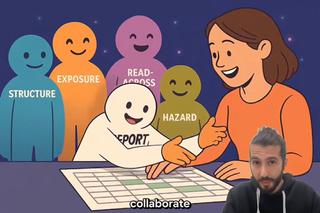
Innovation examples
HealthToxicologyIn silico
AI agents for safer science: How AI is Changing Chemical Risk Assessment
This video introduces a novel approach to chemical safety, where intelligent digital agents guided by large language models support scientists in making faster, more transparent decisions. By automating complex workflows and integrating tools like the OECD QSAR Toolbox, these agentic systems help prioritise research, reduce reliance on animal testing, and pave the way for safer, more sustainable innovation.
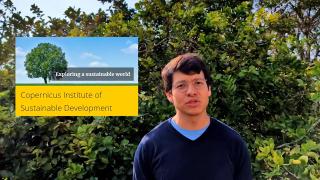
Innovation examples
ToxicologyPolicy
User Research in developing the virtual human platform
Digital tools can support the phasing out of animal-based tests and data in chemical risk assessment. This is one of the core promises of the Virtual Human Platform. The potential contribution of digitalization is linked to the acceptance and adoption of tools, methods, and data by stakeholders in several societal sectors. To facilitate the integration of stakeholders in the configuration of digital tools, Dr. Isaac Ortega Alvarado and colleagues gather insights from risk assessors in their role as users. Risk assessors are the ones who actualize chemical risk assessment and its standards through their practices. With this perspective, this research contributes to understanding the development and implementation of digital tools as embedded in social processes of construction and reception.

Innovation examples
HealthToxicologyIn silico
Predictive computer models for protein binding
In this video Linde Schoenmaker (Leiden University) explains how she and her colleagues are making computer models to predict the safety of new chemicals within the VHP4Safety project.
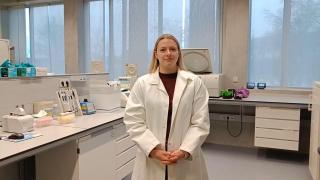
Innovation examples
HealthToxicologyIn vitro
Thyroid Hormone & Brain Development: animal-free models for human safety assessment
The environment can have a significant impact on a child's health even before birth. Brain development begins in the first trimester and continues until the age of 25, with thyroid hormone playing a critical role. During early pregnancy, the fetus depends on the mother's thyroid hormone, and a disruption in the thyroid hormone balance can lead to cognitive and motor impairments in the child. As part of the VHP4Safety project, we are developing in vitro tests to measure the developmental neurotoxic effects caused by disturbances thyroid hormone concentrations. Current testing guidelines do not always include testing for neurodevelopmental effects, highlighting the need for new non-animal methods. At the Erasmus Medical Center, human cell lines representing brain cell types are cultured to study the effect of chemicals on the thyroid hormone balance. RIVM uses human stem cells to create neuron-astrocyte networks that mimic brain development. By combining these different assays and models, we are creating a comprehensive human-based testing strategy to assess developmental neurotoxicity. These advances are a critical step toward eliminating animal testing while protecting the health and environment of future generations.
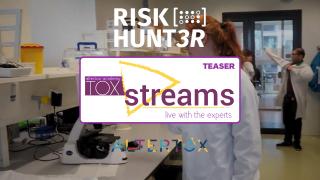
Projects and initiatives
HealthToxicologyIn vitro
RISKHUNT3R project – interview by TOXstreams
Many studies are focused on finding the next best tool or test to assess the risk associated with chemical exposure. That is all well and good, but even the perfect assay needs to be accepted by regulators before seeing the light of the day. And how do we do that? The guests in this webinar have some ideas on that as principal investigators of the EU project RISK HUNT3R. Prof. Bob van de Water, Dr Mirjam Luijten and Dr Andrew White explain what RISK HUNT3R is doing, what next generation risk assessment means and why it is so important. Click on the link in the video to watch the whole interview.
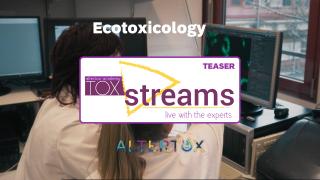
Expert interviews
HealthToxicology
Ecotoxicology explained - interview by TOXstreams
Toxicology is a complicated area where you have to figure out if a chemical is safe for the entire human population? Well, some researchers in this field go even beyond, and instead of studying the safety of substances on “just” people, they focus on any living being on the whole planet. In this TOXstreams interview ecotoxicologists Dr Adam Lillicrap from the Norwegian Institute for Water Research and Dr Kristin Schirmer from the Eawag Science and Technology and co-founder of aQuaTox Solutions GmbH Solutions will explain what and how they do this. Click on the link in the video to watch the whole interview.
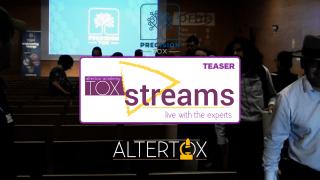
Projects and initiatives
HealthToxicologyIn vitro
PrecisionTox project – interview by TOXstreams
What do nematodes, zooplanktons, clawed frogs, fruit flies, zebrafishes and humans have in common? Well, they are all part of the EU-funded project PrecisionTox. In this teaser for the TOXstreams interview, PrecisionTox researchers explain how they are combining non-traditional test species with molecular and computational methods to better protect our society from toxic chemicals. Prof. John Colbourne, the project’s coordinator, Dr Gaëlle Hayot, Christina Cramer von Clausbruch will tell all you want to know. Click on the link in the video to watch the whole interview.
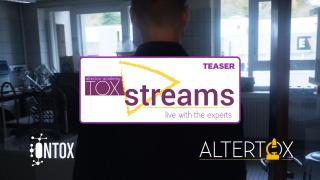
Projects and initiatives
HealthToxicologyIn vitro
ONTOX project – interview by TOXstreams
Have you ever wondered how one can actually develop a new approach method (NAM) to replace animal testing in toxicology? The ONTOX project is creating not just one but six different NAMs. Indeed, this EU-funded project is focused on building NAMs to study repeated dose toxicity effects, an area of toxicology that still relies heavily on animal testing. Prof. Mathieu Vinken, the project’s coordinator, Jian Jiang, PhD, Anouk Verhoeven and Jonas van Ertvelde explain their work to TOXstreams. Click on the link in the video to watch the full episode.

Innovation examples
ToxicologyIn vitro
Combatting the worlds deadliest infections using groundbreaking human-mimetic tools
Combatting the worlds deadliest infections using groundbreaking human-mimetic tools.
Zika, dengue & other viruses are typically tested in monkeys & mice. But is using animals really the most effective way? Find out what Dr. David Pamies of the @jhucaat - along with his colleagues at @JohnsHopkins - are doing to upend the status quo.
More information on:
https://www.eurekalert.org/pub_releases/2019-06/hsi-ctw061319.php
and
https://www.frontiersin.org/articles/10.3389/fcimb.2019.00223/

Expert interviews
Toxicology
How do we use human data in risk assessment
In this video, EFSA explains how they do risk assessment and what the role of NAMs can be in this process.